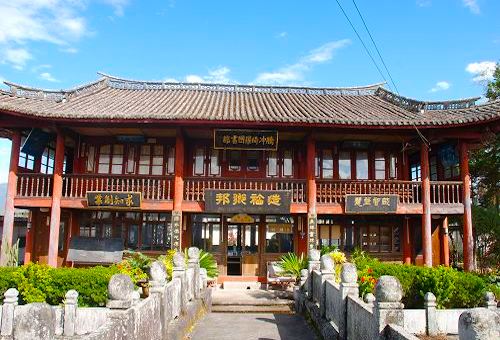
Tengchong – Qiluo Ancient Town

When it comes to the border of Yunnan, Tengchong is the brightest highlight absolute of which. There are many reasons to love it, such as viewing volcanic landform on a hot air balloon, enjoying golden yellow of autumn in a gingko village, appreciating sea of flowers in Beihai Wetland and having a spa in hot spring of Rehai. Actually, there is also a beautiful place, Qiluo Village, which has been scenic and prosperous as early as more than 300 year ago. It is said that the famous traveller Xu Xiake paid his visit here in Qilou and had stayed for several more days because of the charming quality of this small town.

Qiluo Ancient Town
Qiluo is located in the southern foot of Laifeng Mountain, approximately 4 kilometres away from the county seat in the north. It covers an area of approximately 30 square kilometres. Qiluo is divided into Upper Qiluo, Middle Qiluo and Lower Qiluo. It a well known hometown of overseas Chinese of beautiful scenery, long history, people of talent coming forth in large numbers and unsophisticated folk custom and famed town of culture of Tengchong. From Lower Qiluo, the literary ancient village of about 500 families, there were 11 generals and 67 jinshis, jurens and gongshengs during the Ming and Qing Dynasties. Qi Luo was named for rivers in front like belts and silks in shape.

There are crisscross alleys in Qiluo Town. The residents live by their surnames to be their own alleys. There is a “general gate” at each of the alley exit as the common gate of all the families in the alley. 1- 3 rows flagstones are used for paving all over the town so that there is seldom muddy phenomenon. On the opposite of the “general gate”, there is generally a platform on which there is a semilunar screen wall to protect geomantic omen. There is a Cinnamomum hupehanum on the both sides of the platform. There is a tasteful stone stage under the tree. There are many cultural relics in Qiluo Town, which are known as “one palace, two temples and five ancestral temples”, i.e., Wenchang Palace, Shuiying Temple, Jinglan Temple and Qingqi Li’s Ancestral Hall, “Jade Tiger” Li’s Ancestral Hall (destroyed), Yin’s Ancestral Hall and Duan’s Ancestral Hall. Most of them belong to buildings of the Ming and Qing Dynasties as the living fossil of ancient buildings of Qiluo Town. So many cultural relics and historic sites are centralized in the resident area of Lower Qiluo Village which covers an area of less than 1 kilometre. Such high density can be rarely seen all over the country.

Wenchang Palace
Walking through alleys one by one and passing through “general gates” one by one, there are a group of high ancient buildings in front of your face. This is well-known “Wenchang Palace” of Qiluo. Solemn and magnificent pavilions tower aloft and cornices reach toward the sky. Wenchang Palace, a complex of Confucian temple regulation and Taoist temple, is situated in an earth mound like a golden tortoise on the bank of Qiluo River in front of the village. According to the character records on sandalwood in pavilion of Wenchang Hall, it was built in 13th year of Wanli in the Ming Dynasty (A.D. 1586) and has been 428 years from now. During the periods of Kangxi, Yongzheng and Qianlong in the Qing Dynasty, it was rebuilt and enlarged. In 1984, it was listed as county-level culture relic protection unit and on March 5th, 2013, it was listed as national culture relic protection unit.

Shuiying Temple
Shuiying Temple is situated at the foot of Qiluo Shuiwei Mountain and faces each other with Wenchang Palace across a river. It is rated as that “water reflects temple, temples reflects water and water flows in temple”. Shuiying Temple was built in 3rd year of Jiajing in the Ming Dynasty (A.D.) Shuiying Temple consists of the grate, Maitreya Hall, the Great Buddha’s Hall, Jade Emperor Pavilion, the Hall of Avalokitesvara Buddhisatva, Sanguan Hall and auxiliary buildings. It is one of the eight ancient temples of Tengchong. In 1988, it was listed as a county-level key relic protection unit.

Qiluo Library
“Qiluo Library”, built in 1919, boasts a longer history than that of Heshun Library. The gate of the library features traditional, ancient and elegant screen hall. There are lending room, book and newspaper reading room, children’s reading room, newspaper storeroom, etc. It is a countryside library with full functions. With over ten thousand volumes, the library is rated as the first of village-level library in China.

Gingko Village
Besides ancient towns of style of the regions south of the Yangtze River, Gingko Village is another place that cannot be missed during golden autumn days! Located in the east of the river, the village is in the central region of Gaoligong Mountain, which is famous for



